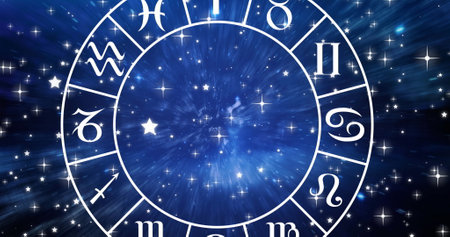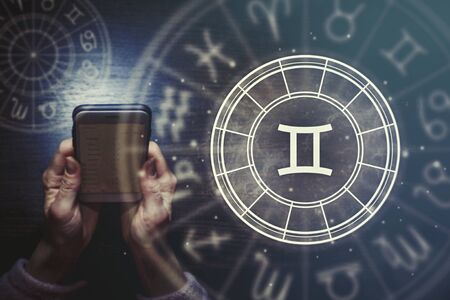Introduction to Zodiac Signs in Indian Tradition
India, a land of vibrant festivals and deep-rooted traditions, has always embraced astrology as an integral part of daily life. The concept of zodiac signs, known locally as Rashi, finds its origins in ancient Vedic texts and scriptures. These signs are not only seen as celestial markers but also as guiding symbols that influence individual destinies, social customs, and cultural practices. From birth charts (Kundali) to auspicious timings (Muhurat), the wisdom of the Rashis is woven into the very fabric of Indian society. During festivals, these astrological symbols take on special significance, guiding rituals, prayers, and celebrations. Thus, understanding the role of zodiac signs provides a unique lens through which one can appreciate the spiritual and cultural richness that defines Indian festivals.
Zodiac Symbols in Major Indian Festivals
India’s diverse and vibrant festivals are deeply intertwined with the zodiac, or “Rashi,” reflecting the importance of celestial symbols in daily and spiritual life. The role of zodiac signs is especially significant during grand celebrations such as Diwali, Makar Sankranti, and Holi. These festivals not only mark astrological transitions but also foster communal unity through rituals that honor planetary influences and the cosmic cycle.
Diwali: Invoking Auspicious Beginnings Through Zodiac Signs
During Diwali, the festival of lights, families consult their personal horoscopes (Janam Kundali) to determine auspicious timings (Muhurat) for prayers and business ventures. Each Rashi is associated with specific rituals and offerings to attract prosperity. For instance, those born under Taurus (Vrishabha) may offer white sweets to Goddess Lakshmi, while Scorpios (Vrischika) might light red candles to enhance spiritual protection.
Makar Sankranti: Zodiac Transition and Harvest Celebrations
Makar Sankranti celebrates the sun’s transition into Capricorn (Makara Rashi), marking a time of new beginnings and harvest. This astronomical event is considered highly auspicious across India. Communities come together to fly kites, prepare sesame treats, and perform Surya Namaskar (sun salutations), all based on the belief that aligning with this zodiac transition brings health and fortune.
Holi: Celestial Unity in Colors
Holi, the festival of colors, falls when the moon enters Virgo (Kanya Rashi) or Libra (Tula Rashi), believed to balance energies. Ritual bonfires known as Holika Dahan are conducted at astrologically chosen times to purify negativity. People of different Rashis participate in singing traditional songs and applying colored powders, symbolizing harmony among all zodiac signs.
| Festival | Zodiac Sign(s) | Symbolic Rituals |
|---|---|---|
| Diwali | Based on Individual Rashi | Auspicious timings for Lakshmi Puja; personalized offerings |
| Makar Sankranti | Capricorn (Makara) | Kite flying; sun salutations; sharing sesame sweets |
| Holi | Virgo (Kanya) / Libra (Tula) | Holika Dahan; community color play; singing folk songs |
The presence of zodiac symbols in these festivities reflects how astrology shapes not just individual destinies but collective cultural expressions across Bharatvarsha. By honoring the Rashis during major festivals, communities strengthen social bonds while seeking divine blessings for peace and abundance.

3. Kundali and Muhurat: Choosing Auspicious Timings
In the vibrant tapestry of Indian festivals, the science of astrology holds a revered place, especially through the concepts of Kundali (astrological birth chart) and Muhurat (auspicious timings). These two elements are deeply interwoven with the spiritual and cultural fabric of India, guiding devotees in making festival celebrations more prosperous and harmonious. The preparation for any major festival—be it Diwali, Navratri, or Ganesh Chaturthi—often begins with consulting a learned astrologer who examines individual or family Kundalis. This ancient practice helps determine the planetary positions and zodiac influences that may impact the rituals or ceremonies.
The selection of an auspicious Muhurat is considered essential for performing pujas, starting new ventures, or even organizing community gatherings during festivals. The process involves intricate calculations based on the lunar calendar, planetary transits, nakshatras (constellations), and tithi (lunar days). For instance, during Holi or Raksha Bandhan, families often wait for the prescribed shubh muhurat before commencing prayers or tying the sacred rakhi. Astrologers utilize traditional panchangs (almanacs) to match these celestial factors with an individual’s zodiac sign, ensuring that every ritual aligns with cosmic energies for maximum blessings.
This devotion to timing reflects a core belief in Indian culture—that cosmic harmony leads to earthly prosperity. Elders often remind younger generations that observing festivals at the right muhurat invites positive vibrations from deities and strengthens familial bonds. In rural villages as well as urban homes across India, you will find people gathered around listening intently as a pandit announces the ideal time for lighting diyas or breaking fasts according to their rashi (zodiac sign). By blending personal Kundali insights with communal traditions, Indians ensure that each festival becomes not just a social event but a spiritually charged occasion guided by divine order.
4. Cultural Variations Across Indian States
Indias rich tapestry of culture is reflected in the way zodiac signs and symbols are integrated into festival observances, with each state offering its own unique interpretation rooted in ancient traditions and local beliefs. While the twelve zodiac signs are universally recognized across the country, their influence on rituals, festivities, and social customs varies markedly from region to region.
Tamil Nadu: Zodiac in Pongal Celebrations
In Tamil Nadu, the harvest festival of Pongal is closely tied to astrological timings. The festival marks the transition of the Sun into the zodiac sign of Capricorn (Makara Sankranti), symbolizing prosperity and renewal. Families consult traditional almanacs (Panchangam) to determine auspicious moments for rituals and offerings, emphasizing alignment with cosmic cycles.
Bengal: Zodiac Symbols in Durga Puja
Bengal’s Durga Puja incorporates zodiac symbolism through intricate rituals where devotees align their prayers according to lunar positions. The Bodhon or invocation of Goddess Durga often considers the moon’s placement in specific nakshatras (lunar mansions), believed to magnify spiritual power. Artisans also embed astrological motifs into pandal decorations and idols.
Gujarat: Navratri and Zodiac Alignment
Gujarat’s famed Navratri festival synchronizes dance (Garba) and worship with celestial movements. Each night’s celebration corresponds with a specific planetary ruler or zodiac sign, influencing dress colours, musical rhythms, and ritual themes. Locals believe participating in Garba during these astrologically significant nights brings harmony and good fortune.
Regional Interpretations at a Glance
| State/Region | Festival | Zodiac Influence |
|---|---|---|
| Tamil Nadu | Pongal | Sun enters Capricorn (Makara); rituals based on Panchangam |
| Bengal | Durga Puja | Lunar nakshatra selection for key rituals; astrological motifs in art |
| Gujarat | Navratri | Nightly themes aligned with planetary/zodiac rulers; colour codes per day |
Unity in Diversity
This regional diversity highlights how deeply astrology is woven into India’s spiritual life. Whether it is the South’s solar transitions, the East’s lunar focus, or the West’s planetary alignments, every community interprets and honours the zodiac through its own lens—yet all share a common reverence for cosmic harmony during festivals.
5. Symbols, Rangoli & Festival Decor
During Indian festivals, the integration of zodiac signs and their symbols into art and home décor becomes a vibrant expression of cultural heritage and cosmic beliefs. One of the most striking manifestations is seen in Rangoli, the traditional floor art made with coloured powders, flowers, or grains. In many homes, families design intricate Rangolis featuring motifs inspired by the twelve zodiac signs—such as the lion for Leo (Simha), the scales for Libra (Tula), or the fish for Pisces (Meena)—to invite positive energies and blessings during auspicious occasions.
Rangoli: Cosmic Patterns on Earth
In regions like Maharashtra, Tamil Nadu, and Gujarat, it is common to see festival-specific Rangoli designs that incorporate planetary symbols or astrological emblems. These patterns are believed to attract prosperity, ward off negativity, and strengthen the connection between the household and cosmic forces. For instance, during Diwali or Makar Sankranti, women often create Rangolis aligned with their family’s Rashi (zodiac sign), blending artistic creativity with spiritual intention.
Zodiac Motifs in Festival Decor
Beyond floor art, zodiac symbols appear in other decorative elements such as wall hangings, torans (door garlands), diyas (lamps), and even puja thalis (ritual plates). Artisans craft these motifs using traditional techniques—embroidery, beadwork, or metalwork—ensuring each piece reflects not just beauty but also astrological significance. The presence of one’s zodiac symbol in festive decor is considered auspicious and a way to invoke personal protection from one’s Ishta Devata (chosen deity) associated with that sign.
Cultural Significance & Contemporary Trends
Today, while urban celebrations may incorporate modern aesthetics, the deep-rooted tradition of weaving zodiac imagery into festival art continues. Many young Indians combine digital prints of their Rashi with classical Rangoli patterns or commission customized decorations for weddings and housewarmings based on astrological charts. This beautiful fusion of age-old symbolism and contemporary creativity ensures that the essence of Indian festivals remains both timeless and deeply personal.
6. Modern Influence and Youth Perspective
In the ever-evolving tapestry of Indian culture, today’s youth and urban communities are weaving new threads into the ancient practice of using zodiac signs and symbols during festivals. The influence of global connectivity, digital media, and a desire for self-expression has prompted young Indians to reinterpret astrological traditions in ways that blend both heritage and innovation. Zodiac-based themes now grace festive decor at Diwali gatherings in Mumbai apartments, or inspire Rangoli designs crafted by university students in Bangalore, symbolising not just luck but also personal identity. Many young people consult their horoscopes before participating in rituals or selecting auspicious timings for events like Holi parties or Durga Puja celebrations, often sharing these insights on social platforms with hashtags such as #ZodiacVibes or #AstroFestivals. This modern engagement goes beyond mere superstition; it is a conscious effort to stay connected with roots while expressing individuality. Some urban communities have even introduced “zodiac match” games during Navratri garba nights, sparking conversations about compatibility and destiny among friends. Apps and online tools offering festival-specific astrology tips are trending among Gen Z, reflecting an appetite for blending tradition with technology. Ultimately, the role of zodiac signs and symbols in Indian festivals is being revitalised by the youth—transforming age-old beliefs into living traditions that resonate with contemporary aspirations, fostering a vibrant dialogue between the cosmic and the cultural.

